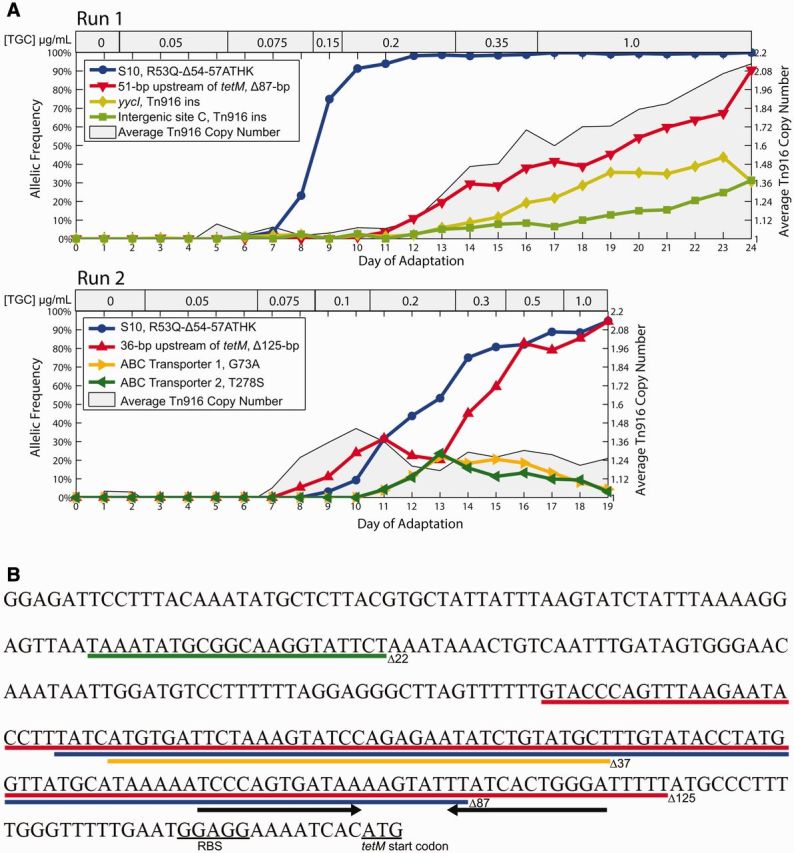Fig. 1.

Experimental evolution of pathogenic Enterococcus faecalis to TGC shows that deletion of tetM regulatory elements and mutation of the ribosomal protein S10 provide the successful evolutionary trajectories to TGC resistance. (A) Deep sequencing was performed on samples of the polymorphic populations collected on each day of adaptation. These population metagenomic data were then used to determine daily allelic frequencies during each bioreactor experiment. This method detects alleles that reached at least 5% during adaption; however for clarity, only alleles that reached at least 20% were plotted. Mutations at two loci were successful in both experimental runs; deletions that eliminate a regulatory element in the 5′-UTR of tetM (red) and a 12-bp deletion in the ribosomal S10 protein (S10R53Q-Δ54-57ATHK) (blue). Additionally, during the first experimental run there were two specific insertions of Tn916 that exceeded 20% by the end of adaptation (of 44 insertions that exceeded 1%). The new insertions of Tn916 occurred within the yycI gene (light green) and an intergenic site (green). These two sites were not successful during the second run and thus may have hitchhiked with the 87-bp deletion in the 5′-UTR of tetM. The average Tn916 copy number of the population was determined by sequencing coverage. S613 has one chromosomal copy of Tn916, but after undergoing TGC selection the average cell within the population had 2.13 and 1.25 copies by the end of the first and second runs, respectively. (B) Diagram showing the sequence of the 5′-UTR of tetM and the deletions identified in this region during adaptation to TGC. Deletions are shown as colored lines and the terminator stem-loop is indicated with black arrows beneath the sequence. An 87-bp (blue) and 125-bp (red) deletions remove the terminator stem loop and were highly successful during adaptation, whereas a 37-bp (orange) and 22-bp (green) deletions leave the stem-loop intact and were only detected at low frequencies during adaptation but still conferred increased resistance presumably by removal of as yet uncharacterized regulatory sequences.
